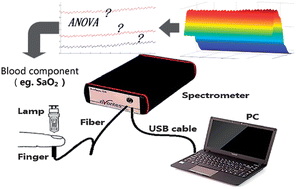Wavelength selection method based on test analysis of variance: application to oximetry
Abstract
In order to improve the precision and the reliability of spectral measurement of blood oxygen saturation, a method of test analysis of variance was employed. We selected the preferred wavelength combination by the analysis of the coefficient distribution of oximetry from different wavelength combinations. Calculated by different combinations of wavelengths (660 nm and 940 nm, 660 nm and 805 nm, 805 nm and 940 nm, which are commonly used) through the clinical data under different oxygen saturation, we first established a single factor test analysis of the variance model of the oxygen saturation coefficient. Then the relative preferable wavelength combination can be selected out by comparative analysis of different combinations of wavelengths from the photoelectric volume pulse to provide a reliable intermediate data for further modeling. The experimental results showed that the wavelength combination of 660 nm and 805 nm responded more significantly to the changes in blood oxygen saturation. The introduced noise and method error are relatively smaller in this combination than in the other wavelength combinations tested, which could improve the measurement accuracy for oximetry. The study applied the test variance analysis to the selection of wavelength combination in the blood oxygen result measurement, which had significant results. The study provided a new idea for blood oxygen measurements and other spectroscopy quantitative analysis.


 Please wait while we load your content...
Please wait while we load your content...